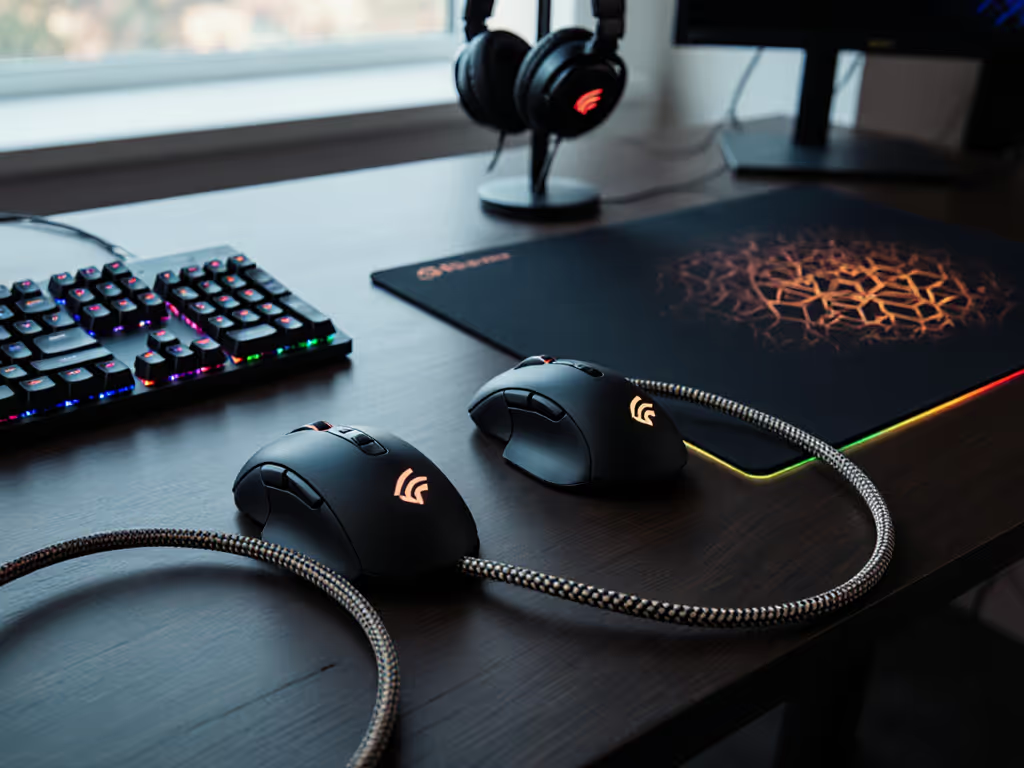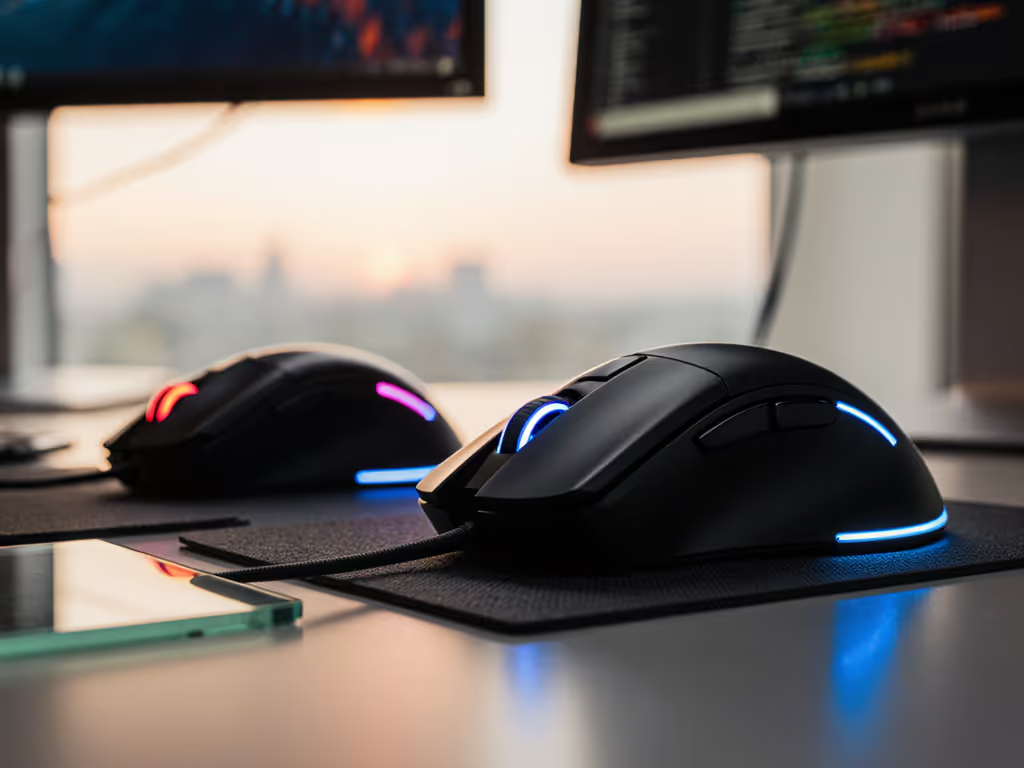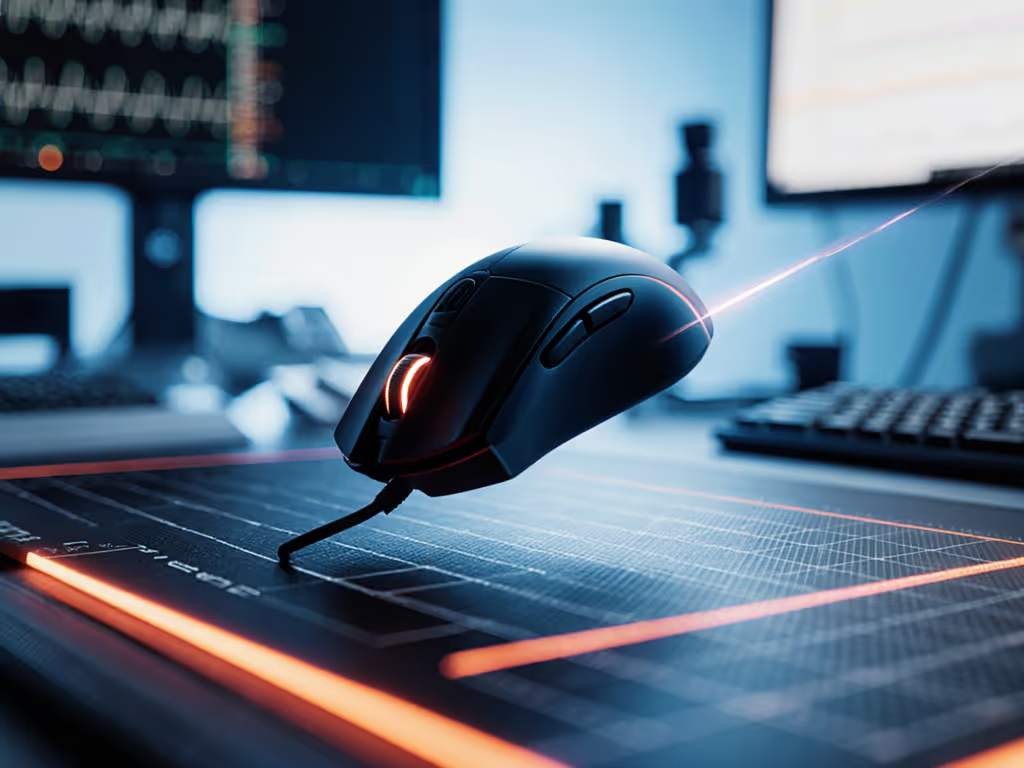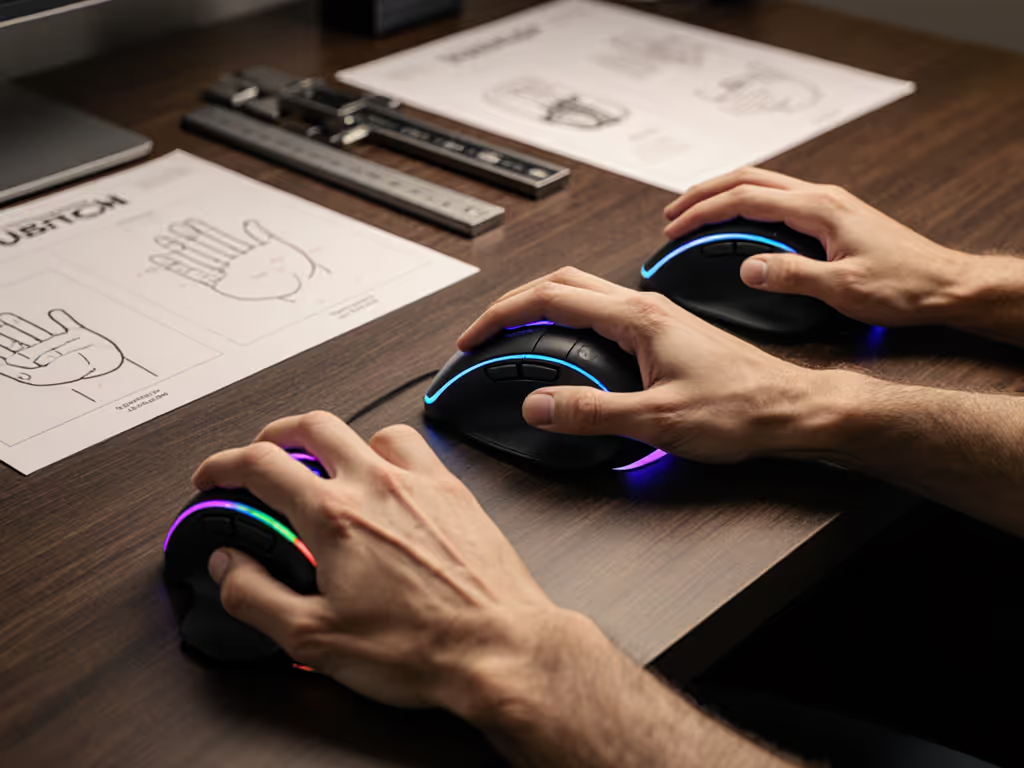
Mouse Sensor Types: Laser vs Optical Surface Performance

Choosing the right mouse sensor significantly impacts performance across gaming, design, and productivity workflows. This analysis examines laser and optical sensor technologies through empirical data, highlighting how surface compatibility, tracking behavior, and precision requirements dictate optimal selection. We prioritize measurable performance indicators over marketing claims to clarify which sensor type excels under specific conditions.
Fundamental Operating Principles
Optical Sensor Mechanism
Optical sensors employ an LED light source (typically red or infrared) to illuminate the surface beneath the mouse. A CMOS sensor captures microscopic surface textures at ~10,000 frames per second, translating positional changes into cursor movement. For a deeper primer on how sensors detect movement, see our sensor mechanics explainer. This technology demonstrates peak accuracy on matte surfaces with consistent texture patterns, such as cloth mousepads or uncoated wood, where irregular reflections are minimized [1][2][3].
Laser Sensor Operation
Laser sensors utilize an infrared laser diode that penetrates deeper into surface microstructures than LEDs. This enables tracking on non-conventional surfaces like glass or polished desks by detecting sub-surface scattering patterns rather than surface-level reflections [2][4]. However, the heightened sensitivity can amplify microscopic imperfections, potentially introducing jitter during slow, precise movements. Routine surface and sensor maintenance reduces jitter; follow our mouse cleaning guide.
Tracking Precision = Surface Texture Detail / Sensor Sensitivity
Performance Comparison Under Controlled Conditions
| Metric | Optical Sensor | Laser Sensor |
|---|---|---|
| Surface Compatibility | Matte cloth, wood, plastic | Glass, glossy surfaces |
| Tracking Consistency | Low jitter (±0.5%) | Variable (±1.2-3.5%) |
| Max DPI Range | 25,000 DPI | 40,000 DPI |
| Lift-Off Distance (LOD) | 1-2 mm | 1-3 mm |
| Power Consumption | 15-30% lower | Higher |
Data aggregated from industry testing protocols [3][5][6]. Optical sensors achieve superior consistency through reduced sensitivity to surface debris and weave patterns, which is critical for first-person shooter (FPS) games requiring pixel-perfect micro-adjustments. If you primarily play shooters, our lab-tested best FPS mice focus on low-jitter sensors and predictable LOD. Laser sensors excel in environments demanding surface-agnostic tracking, though modern high-end optical sensors (e.g., Razer's 5G Advanced 18K) now support glass surfaces through algorithmic innovations [3][5].
Application-Specific Recommendations
Competitive Gaming
Optical sensors dominate esports due to predictable tracking. The Razer Basilisk V3 X HyperSpeed exemplifies this category, combining an 18K DPI optical sensor with tuned surface calibration for ≈99.8% motion accuracy [8]. Laser sensors' higher native DPI often proves counterproductive here, as excessive sensitivity amplifies microscopic hand tremors during sniper scoping.
Design and Content Creation
For graphic design or video editing requiring cursor stability, optical sensors help prevent unintended drift during detail work. When surface versatility is non-negotiable (for example, glass desks in minimalist setups), select laser sensors with surface calibration tools to mitigate jitter [4][5].
Productivity Environments
Bluetooth-centric workflows favor optical sensors' power efficiency, extending battery life by 20-40% versus laser equivalents. To decide between Bluetooth, 2.4GHz, or wired setups, see our wired vs wireless mouse guide. For multi-surface mobility (laptop -> glass table -> notebook), laser sensors reduce reticle repositioning [1][6].
Surface Optimization Guidelines
- Optical Sensors: Pair with medium-weave cloth pads (3-4 mm thickness) to balance texture depth and glide consistency
- Laser Sensors: Use hard hybrid pads (for example, cordura/polycarbonate) to suppress surface noise
- Hybrid Workflows: Consider surfaces like the Pulsar ParaSpeed V2, engineered for dual-sensor compatibility



